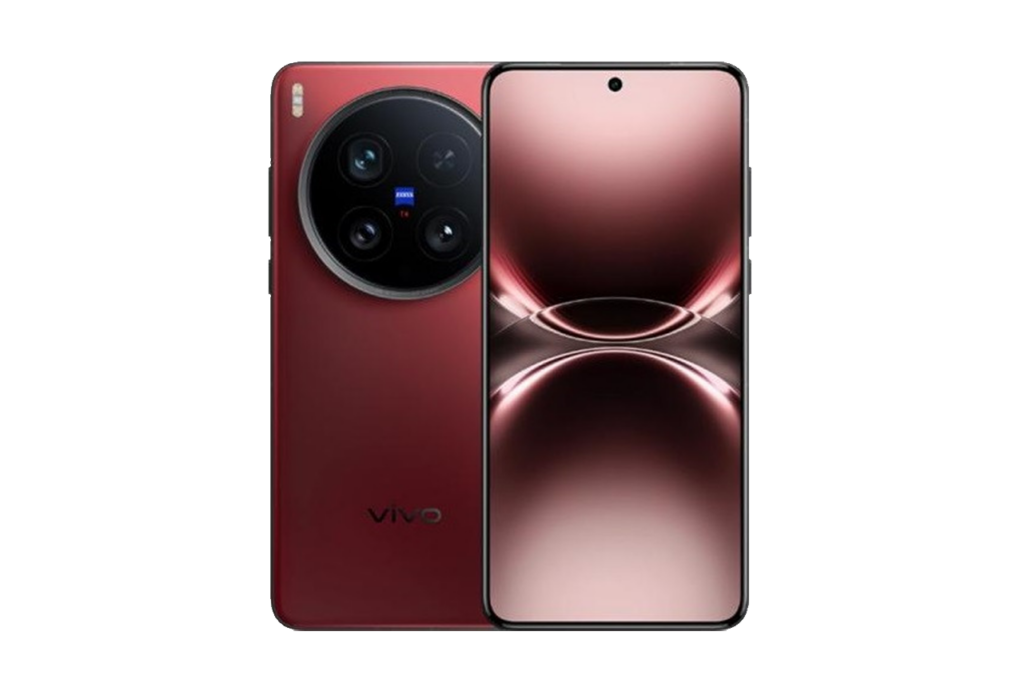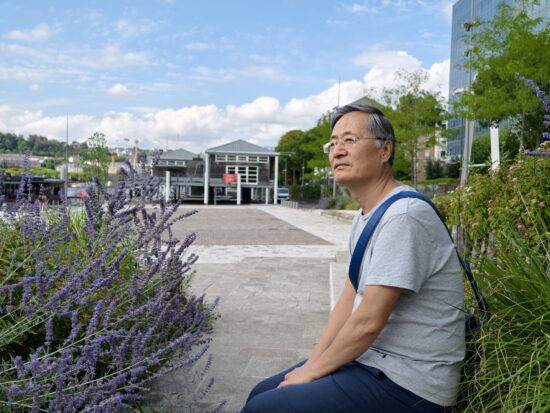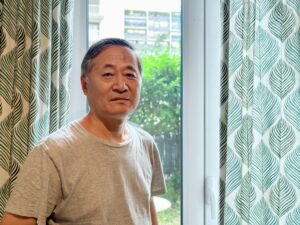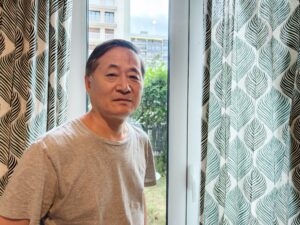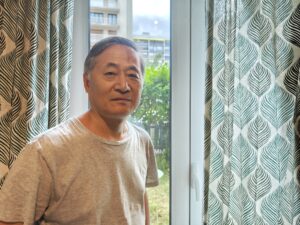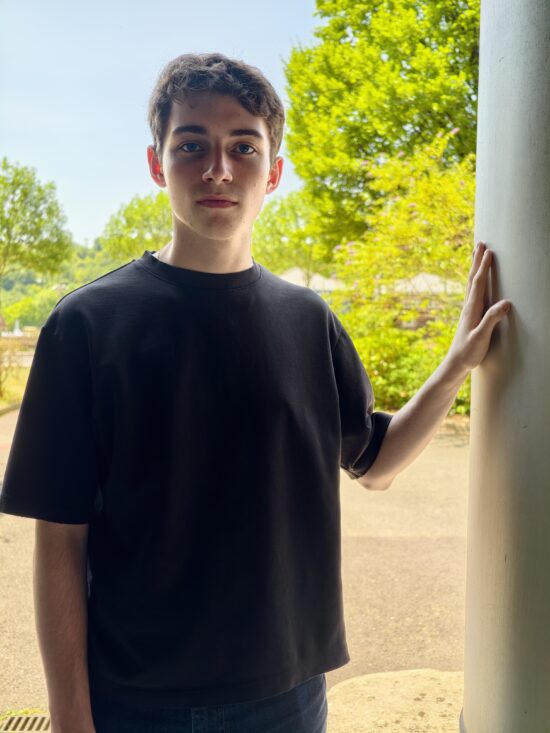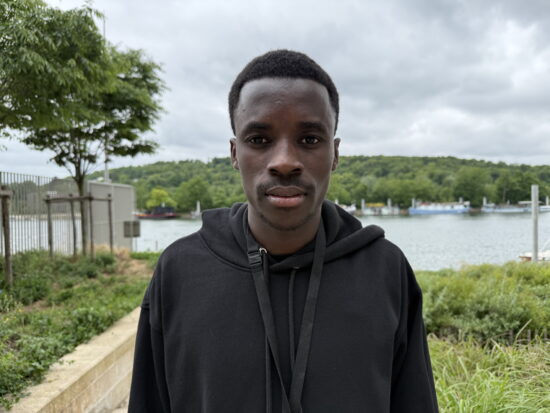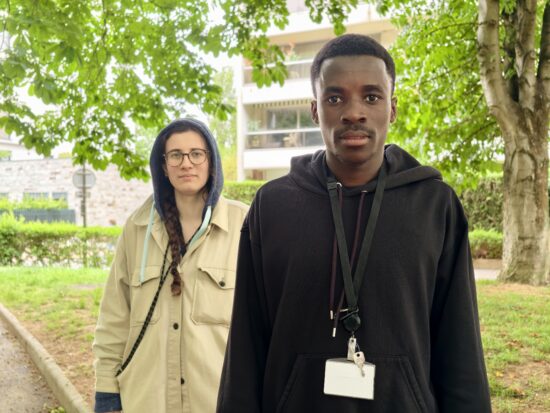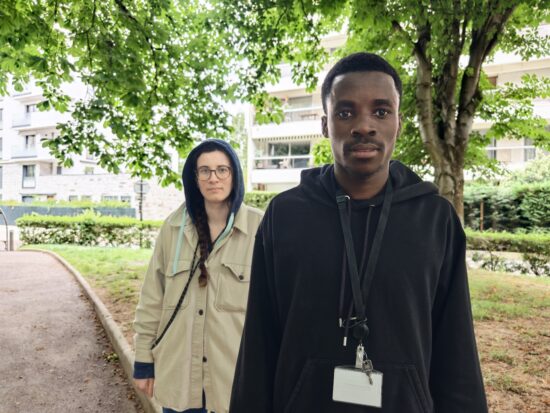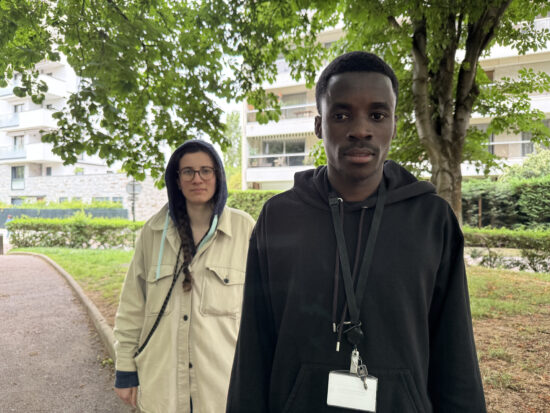We put the Vivo X200 Ultra through our rigorous DXOMARK Camera test suite to measure its performance in photo, video, and zoom quality from an end-user perspective. This article breaks down how the device fared in a variety of tests and several common use cases and is intended to highlight the most important results of our testing with an extract of the captured data.
Overview
Key camera specifications:
- Primary: 50MP 1/1.28″ sensor, 1.22µm pixels, 35mm equivalent f/1.7-aperture lens, dual‑pixel PDAF, OIS
- Ultra-wide: 50MP 1/1.28″ sensor, 1.22µm pixels, 14mm equivalent f/2.0-aperture lens, dual‑pixel PDAF, OIS
- Tele: 200MP 1/1.4″ sensor, 0.56µm pixels, 85mm equivalent f/2.3-aperture lens, PDAF, OIS
Scoring
Sub-scores and attributes included in the calculations of the global score.
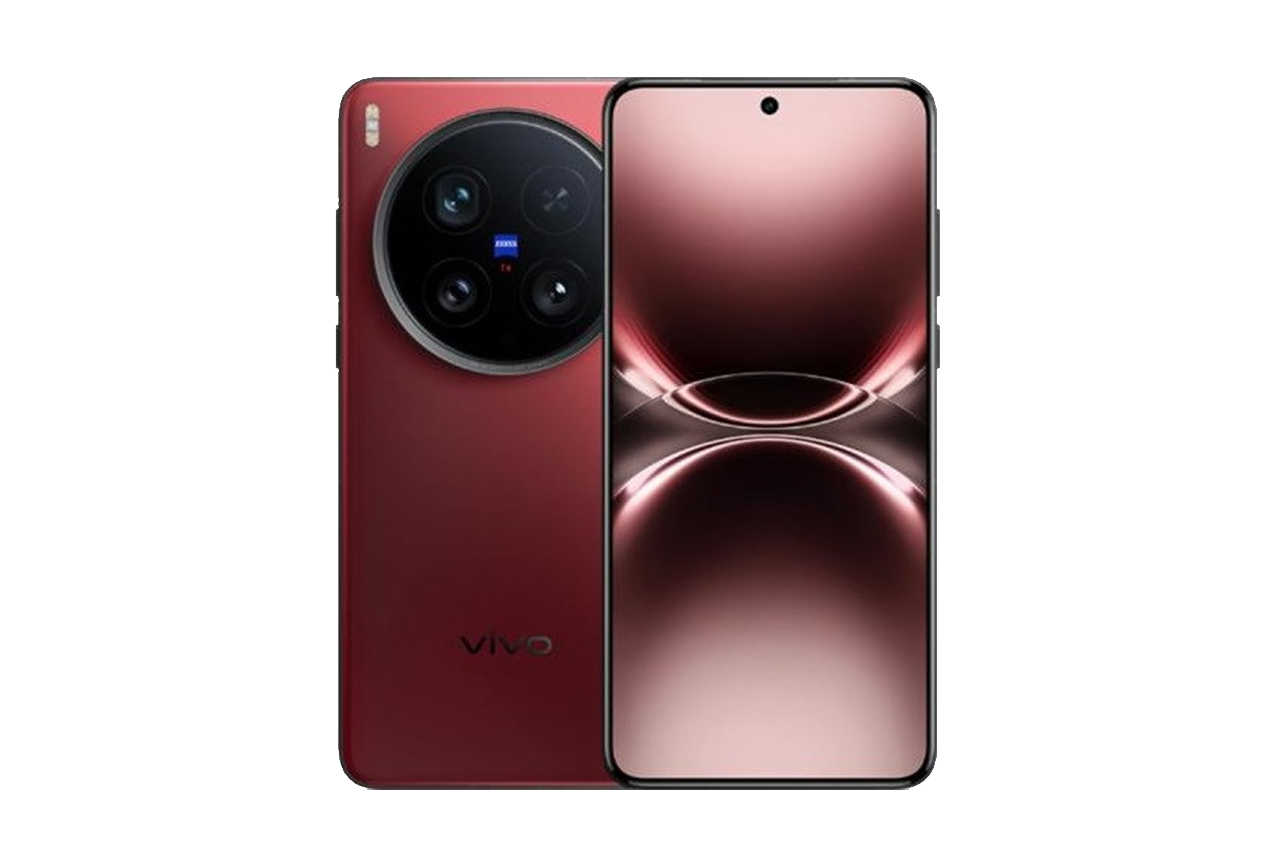
Vivo X200 Ultra


Use cases & Conditions
Use case scores indicate the product performance in specific situations. They are not included in the overall score calculations.
Portrait
Portrait photos of either one person or a group of people
Outdoor
Photos & videos shot in bright light conditions (≥1000 lux)
Indoor
Photos & videos shot in good lighting conditions (≥100lux)
Lowlight
Photos & videos shot in low lighting conditions (<100 lux)
Zoom
Photos and videos captured using zoom (more than 1x)
Pros
- Excellent exposure in portraits scenes, very well controlled contrast on faces
- Good detail in daylight and indoors
- Accurate autofocus in daylight and indoors
- Realistic bokeh and very fine subject isolation in bokeh mode
- High levels of detail across medium and long tele zoom settings
- High levels of detail down to low light with the ultra-wide camera
- Accurate exposure and transitions in most video scenes
- Stable autofocus and nice focus transitions in video mode
Cons
- Narrow depth of field can result in out-of-focus subjects in group shots
- Slight white balance inaccuracies in difficult indoor and low light scenes
- Focus inaccuracies in very low light
- Occasional halo artifacts
- Slight loss of detail in close and medium range tele shots
- White balance casts in daylight video
- Loss of detail in low light video
- Coarse luminance noise in low light and backlit video scenes
- Residual motion when recording video while walking
The Vivo X200 Ultra delivers excellent results in the DXOMARK Camera tests, securing itself one of the top position in our ranking. It offers a highly original and complete camera system that stands out from the competition. Unlike most rival phones, which use a wider focal length of around 25 mm, the Vivo’s primary camera comes with an unusual 35 mm equivalent focal length, making it a very compelling option for portrait photography, thanks to a narrower depth of field which helps isolate the subject from the background. But the Vivo X200 Ultra is not only great for portrait photographers. Its camera’s overall performance make it one of the best imaging smartphones in general.
The device delivers exceptional results in still photography and ranks first in our photo ranking, thanks to excellent exposure control in portrait scenes, a remarkably effective zoom, a highly accurate and natural portrait mode, as well as an ultra-wide camera module with a large sensor that is capable of gathering more light than most equivalent modules on rival phones.
The 35mm equivalent primary module offers an excellent exposure strategy and a vivid, somewhat bold color signature, which should appeal to most users. Images show large amounts of fine detail and well-controlled noise across all lighting conditions. In addition, the Vivo camera outperforms competitors in challenging conditions, such as night scenes, with good exposure and very nice detail in portrait shots.
While the primary camera offers advantages in portrait photography, its still faces few autofocus issues in challenging conditions like very lowlight scenes.
Other manufacturers are slightly ahead of Vivo in this respect, with hardware solutions like variable aperture, that allows for adjusting depth of field to the scene. On the plus side, on the Vivo shutter lag is very brief, although not quite as good as on the best phones in this category, such as the iPhone 16 Pro Max. During testing, our experts also observed some autofocus failures in difficult scenes, for example night shots. The ultra‑wide camera uses a a sensor of the same size as the primary camera, producing crisp landscapes and group shots with minimal distortion, even in low light settings. It is the best ultra-wide camera that we have tested to date, with very good results across all test attributes.
The 200MP telephoto camera offers impressive clarity, delivering sharp detail with low noise and little oversharpening up to around 10x tele zoom factors. Thanks to precise subject detection and natural subject isolation, the tele camera also works well for portrait shots. In daylight, it delivers good color accuracy and a wide dynamic range. Slight overexposure can be noticeable on occasion but the affected images generally still look nice. Only very few rival phones are better than the Vivo in the tele zoom category, for example the Xiaomi 15 Ultra that is capable of rendering slightly more detail in some conditions.
In portrait mode, the Vivo achieves top level results as well. Subject segmentation is precise, with very few depth artifacts compared to competitors like the iPhone 16 Pro Max. The overall rendering looks pleasant and natural, with crips detail on the subject’s face.
In video mode the Vivo X200 Ultra has been tested using at 4K resolution and a 30fps frame rate, shooting with the primary camera. While the camera offers some great video features, such as 4K recording at 120fps and 10-bit HDR, it still trails slightly behind the iPhone and Oppo Find series in a few key areas. Dynamic range in high-contrast scenes can sometimes appear less balanced, especially during extreme lighting transitions. Apple’s computational video processing is still leading in tonal consistency and real-time HDR rendering. In addition, Vivo’s video footage can suffer from softness and occasional noise. Oppo and Apple perform more reliably in this respect. These subtle but important differences mean that the X200 Ultra is still just a notch below the best-in-class devices for video.
This said, video quality is impressive across all camera modules, including the telephoto and ultra-wide. Like the primary camera, the 200MP periscope telephoto module supports up to 4K at 120fps, which is very rare. In daylight tele footage also shows excellent sharpness and detail across a range of settings, especially at 4K/60fps which we used to perform our tele video tests. The optical image stabilization ensures handheld footage is smooth and stable, but in night or low light scenes noise starts creeping in.
The ultra-wide camera is also capable of recording 4K/120fps footage, but, like for the tele, our tests were performed at 4K/60fps. At these settings the ultra-wide captures vibrant and stable footage. However, dynamic range can be reduced when compared to the primary camera, especially in complex lighting situations. Overall, both tele and ultra-wide deliver well above average video quality, with good transitions between camera modules and consistent rendering across all zoom ratios.
Low light performance is strong across the entire camera system, but there are a few differences between the modules. The primary 35mm camera excels in dim conditions, capturing clean, detailed images with impressive dynamic range and accurate colors, thanks to a large sensor and advanced processing algorithms.
The periscope telephoto lens is capable of solid low light photography as well, but shows a noticeable dip in quality for video, with reduced detail and occasional noise, especially at higher zoom levels. The ultra-wide lens performs decently in low light for both photo and video, but its smaller aperture results in less detail and more visible grain when compared to the primary camera. This said, overall the X200 Ultra is among the best Android phones for low light imaging. It only trails slightly behind the Oppo Find X8 Ultra in terms of consistency and clarity when recording video in dim conditions.
Portrait photography is one of the Vivo X200 Ultra’s main strengths. The primary camera’s 35mm lens is optimized for natural background compression and provides flattering facial proportions. The phone also delivers exceptional subject separation, realistic skin tones, and a smooth bokeh that closely mimics DSLR-like depth of field.
Low-light portraits also impress, thanks to effective noise reduction and skin-tone preservation without over-smoothing. However, while results are excellent in most cases, the shallow depth of field can impact sharpness of faces in group portraits, and skin tones can, depending on lighting, be slightly warm. Still, overall the X200 Ultra offers one of the most refined portrait experiences on any smartphone, rivaling or even surpassing the iPhone 16 Pro Max.
Zoom performance is outstanding, mainly thanks to the impressive telephoto lens and its periscope design. In daylight shooting, images are highly detailed up to a 10x tele zoom factor, with sharpness and contrast that rival the best in class. At medium to low light levels, zoom performance is still solid for still images, thanks to sensor cropping and smart exposure tuning. For video zoom, the results are similarly good in bright light, with stable focus and vivid detail, but quality decreases in more challenging light conditions, where softness and occasional jitter are creeping in. Overall, the Vivo X200 Ultra takes the lead in terms of tele zoom performance, thanks to its versatility, as well as high quality stills and videos.
Test summary
About DXOMARK Camera tests: DXOMARK’s camera evaluations take place in laboratories and real-world situations using a wide variety of use-cases. The scores rely on objective tests for which the results are calculated directly using measurement software in our laboratory setups, and on perceptual tests where a sophisticated set of metrics allow a panel of image experts to compare aspects of image quality that require human judgment. Testing a smartphone involves a team of engineers and technicians for about a week. Photo and Video quality are scored separately and then combined into an overall score for comparison among the cameras in different devices. For more information about the DXOMARK Camera protocol, click here. More details on smartphone camera scores are available here. The following section gathers key elements of DXOMARK’s exhaustive tests and analyses. Full performance evaluations are available upon request. Please contact us on how to receive a full report.
Photo
Vivo X200 Ultra
180
For scoring and analysis, DXOMARK engineers capture and evaluate more than 3,800 test images in controlled lab environments as well as outdoor, indoor and low-light natural scenes, using the camera’s default settings. The photo protocol is designed to take into account the main use cases and is based on typical shooting scenarios, such as portraits, landscape and zoom photography. The evaluation is performed by visually inspecting images against a reference of natural scenes, and by running objective measurements on images of charts captured in the lab under different lighting conditions from 0.1 to 10,000+ lux and color temperatures from 2,300K to 6,500K.

Main
Vivo X200 Ultra
184
Close-Up
In our tests the Vivo X200 Ultra delivered a solid, but not class-leading, macro performance. The camera relies on the ultra-wide lens for close focusing, allowing users to capture subjects at a relatively short shooting distance, while capturing decent detail. In good light, macro shots show vibrant colors and respectable sharpness, making the Vivo a good option for capturing close-ups of flowers, textures, or small objects in general. In low light, macro performance declines, with higher noise levels and reduced focus precision. Depth of field can be shallow, which means it’s best to capture several shots to make sure you have at least one well-focused image. Overall, the Vivo’s macro mode is capable and convenient, but more of a bonus than a headline feature.

Exposure
Vivo X200 Ultra
134
Exposure is one of the key attributes for technically good pictures. The main attribute evaluated is the brightness level of the main subject through various use cases such as landscape, portrait, or still life. Other factors evaluated are the global contrast and the ability to render the dynamic range of the scene (ability to render visible details in both bright and dark areas). When the camera provides Photo HDR format, the images are analyzed with a visualization on an HDR reference monitor, under reference conditions specified in the ISO-22028-5 standard. Repeatability is also important because it demonstrates the camera's ability to provide the same rendering when shooting several images of the same scene.
The Vivo X200 Ultra delivers excellent photo exposure, with a well-balanced approach to brightness, contrast, and dynamic range. In most conditions, it captures scenes with accurate brightness, avoiding highlight clipping while preserving shadow detail. Vivo’s image processing favors a natural contrast profile, making images look clean and realistic without looking flat.
Dynamic range is particularly strong and high-contrast scenes, such as backlit portraits or sunlit architecture, retain both sky detail and subject clarity with very little clipping. Overall, the Vivo X200 Ultra offers top-tier exposure performance, combining well-controlled brightness, natural contrast, and a wide dynamic range to produce appealing photos in pretty much any lighting condition.

Color
Vivo X200 Ultra
133
Color is one of the key attributes for technically good pictures. The image quality attributes analyzed are skin-tone rendering, white balance, color shading, and repeatability. For color and skin tone rendering, we penalize unnatural colors according to results gathered in various studies and consumer insights while respecting the manufacturer's choice of color signature.
The Vivo X200 Ultra delivers refined color performance in photos, striking a balance between accuracy and vibrancy. Colors are generally natural yet quite vivid, with a slight warmth that enhances skin tones especially. The primary 35mm lens produces excellent white balance in bright light. In low light, the camera preserves color well, avoiding the washed-out or overly yellow casts some phones suffer from.

Sharpness & Timing
Vivo X200 Ultra
135
Autofocus tests concentrate on focus accuracy, focus repeatability, shooting time delay, and depth of field. Shooting delay is the difference between the time the user presses the capture button and the time the image is actually taken. It includes focusing speed and the capability of the device to capture images at the right time, what is called 'zero shutter lag' capability. Even if a shallow depth of field can be pleasant for a single subject portrait or close-up shot, it can also be a problem in some specific conditions such as group portraits; Both situations are tested. Focus accuracy is also evaluated in all the real-life images taken, from infinity to close-up objects and in low light to outdoor conditions.
The Vivo X200 Ultra features a fast and reliable autofocus system that locks onto subjects quickly and accurately in most conditions. The AF performance is close to top competitors but still slightly behind iPhone 16 Pro Max especially in terms of small shutter lag. Still, in good light, the camera captures images with minimal delay after pressing the shutter, ensuring you don’t miss key moments. In low light or high dynamic range scenes, the processing delay is short, thanks to Vivo’s efficient multi-frame processing but sometimes longer than on competing devices. Some autofocus issues were observed in challenging night conditions.
Vivo X200 Ultra appears to use an embedded software solutions that slightly enhances detail on background faces in group shots. This is done to compensate for the narrow depth of field that tends to slightly blur faces and objects in the background. However, this software solution is not quite as effective as a smaller aperture would be.
Texture tests analyze the level of details and the texture of subjects in the images taken in the lab as well as in real-life scenarios. For natural shots, particular attention is paid to the level of details in the bright and dark areas of the image. Objective measurements are performed on chart images taken in various lighting conditions from 0.1 to 10,000+ lux and different kinds of dynamic range conditions. The charts used are the proprietary DXOMARK chart (DMC), and the Dead Leaves chart. We also have an AI based metric for the level of details on our realistic mannequins Eugene and Diana.
The Vivo X200 Ultra’s texture rendering is excellent, capturing fine detail when shooting with the primary camera. In good light, textures such as skin, fabric and architectural surfaces are rendered with impressive sharpness, and without looking artificially overprocessed. In low light, texture is also better preserved than on many competing phones, avoiding the waxy look that can result from aggressive noise reduction. Overall, the X200 Ultra provides top-tier texture quality, especially in daylight and portrait scenarios, offering images that look both detailed and natural. In this respect it rivals Apple’s class-leading flagship devices in bright light, and the detail captured by Oppo’s flagship camera in dimmer conditions.

Noise
Vivo X200 Ultra
129
Noise tests analyze various attributes of noise such as intensity, chromaticity, grain, structure on real-life images as well as images of charts taken in the lab. For natural images, particular attention is paid to the noise on faces, landscapes, but also on dark areas and high dynamic range conditions. Noise on moving objects is also evaluated on natural images. Objective measurements are performed on images of charts taken in various conditions from 0.1 to 10000 lux and different kinds of dynamic range conditions. The chart used is the Dead Leaves chart and the standardized measurement such as Visual Noise derived from ISO 15739.
Image noise is impressively well under control control when shooting with the primary camera. Vivo’s noise reduction algorithms are well-tuned, avoiding excessive smoothing and preserving natural textures. Noise performance is also good in low light. Noise is kept to a minimum while shadow detail is still good and dynamic range is retained. Even in challenging indoor or night scenes, grain remains finely textured.

Artifacts
Vivo X200 Ultra
81
The artifacts evaluation looks at flare, lens shading, chromatic aberrations, geometrical distortion, edges ringing, halos, ghosting, quantization, unexpected color hue shifts, among others type of possible unnatural effects on photos. The more severe and the more frequent the artifact, the higher the point deduction on the score. The main artifacts observed and corresponding point loss are listed below.
Bokeh is tested in one dedicated mode, usually portrait or aperture mode, and analyzed by visually inspecting all the images captured in the lab and in natural conditions. The goal is to reproduce portrait photography comparable to one taken with a DLSR and a wide aperture. The main image quality attributes paid attention to are depth estimation, artifacts, blur gradient, and the shape of the bokeh blur spotlights. Portrait image quality attributes (exposure, color, texture) are also taken into account.
The Vivo X200 Ultra’s bokeh images are exceptional. When shooting In portrait mode, the camera maintains excellent edge detection and subject separation, even around complex areas like hair or hands. The blur transitions between sharp and blurred areas look gradual and natural.
The use of the telephoto camera in bokeh mode contributes nicely to bokeh quality. This is especially true for distant portraits where the tele offers subtle compression and background isolation without distortion. In low light, the bokeh effect remains very good, but minor edge artifacts can occasionally appear. Overall, the Vivo X200 Ultra ranks among the best smartphones for bokeh, delivering a highly refined mix of optical depth, and smooth blur.

Tele
Vivo X200 Ultra
169
All image quality attributes are evaluated at focal lengths from approximately 40 mm to 300 mm, with particular attention paid to texture and detail. The score is derived from a number of objective measurements in the lab and perceptual analysis of real-life images.
The Vivo X200 Ultra offers one of the most capable zoom systems on any smartphone. The 200MP periscope telephoto lens delivers exceptional detail and clarity at medium to long zoom ranges, particularly between 5x and 10x, where it operates near its optical sweet spot. Thanks to Vivo’s refined computational tuning, images captured at these ratios are crisp and well-exposed. In low light, the telephoto lens performs admirably for stills up to around a 5x tele zoom factor, maintaining acceptable sharpness and contrast. Beyond that, image quality can degrade, with more noise and reduced fine detail. Overall, the telephoto system on the X200 Ultra is top-tier, excelling in sharpness, flexibility, and consistency, especially in well-lit conditions, making it ideal for distant subjects, travel, and creative framing.
These tests analyze the performance of the ultra-wide camera at several focal lengths from 12 mm to 20 mm. All image quality attributes are evaluated, with particular attention paid to such artifacts as chromatic aberrations, lens softness, and distortion. Pictures below are an extract of tested scenes.
The ultra-wide camera offers a strong overall performance. It captures sharp, well-exposed images with minimal distortion. In daylight, the ultra-wide lens delivers respectable detail, with textures and edges looking sharp. Like on most devices, it’s not quite as sharp as the primary or telephoto sensors, though. Dynamic range is good, with highlights and shadows balanced well, even in high-contrast scenes. In low light, the ultra-wide performance remains decent but, as one would expect, a drop in image quality is noticeable. Noise levels are higher, sharpness is reduced and textures are less defined, especially towards the edges of the frame. Overall, the ultra-wide camera on the Vivo X200 Ultra is well-rounded and dependable, delivering great daylight results. Image quality is still acceptable in low light, but, like on most devices, not on quite the same level as the primary and tele camera modules.
Video
Vivo X200 Ultra
172
DXOMARK engineers capture and evaluate almost 3 hours of video in controlled lab environments and in natural low-light, indoor and outdoor scenes, using the camera’s default settings. The evaluation consists of visually inspecting natural videos taken in various conditions and running objective measurements on videos of charts recorded in the lab under different conditions from 0.1 to 10000+ lux and color temperatures from 2,300K to 6,500K.

Main
Vivo X200 Ultra
186

Exposure
Vivo X200 Ultra
127
Exposure tests evaluate the brightness level of the main subject, the global contrast and the ability to render the dynamic range of the scene (ability to render visible details in both bright and dark areas). When the camera provides Video HDR format, the videos are analyzed with a visualization on an HDR reference monitor, under reference conditions specified in the metadata. Stability and temporal adaption of the exposure are also analyzed.
The Vivo’s video exposure system offers consistent and well-balanced brightness across a range of lighting conditions. High-contrast scenes are handled well, with smooth highlight preservation, bright highlights and deep shadows, and no clipping. Exposure transitions are fairly fast and natural, even with sudden changes in lighting or motion in the scene, making it reliable for handheld shooting and dynamic scenes. In low light, exposure remains stable and the camera is capable of avoiding underexposed or overly dark videos. The HDR video mode helps further enhance exposure balance, delivering rich tonal gradation and depth that is only slightly surpassed by the Oppo Find X8 Ultra. Overall, the Vivo X200 Ultra’s primary camera excellent video exposure performance, combining fast adaptation, wide dynamic range, and consistent brightness to ensure high-quality footage in nearly any scenario.

Color
Vivo X200 Ultra
131
Image-quality color analysis looks at color rendering, skin-tone rendering, white balance, color shading, stability of the white balance and its adaption when light is changing.
Primary camera video color is pleasant, with rich, natural, and well-saturated tones that look vibrant without feeling exaggerated. Color remains consistent and true-to-life across a range of lighting conditions, with accurate skin tones and balanced hues that avoid oversaturation or unnatural shifts. The Vivo supports 10-bit color depth and HDR video, which significantly enhances dynamic range and color richness, allowing for smoother transitions and more detail in shadows and highlights during post-processing. This said, the best competitors, like the iPhone 16 Pro Max, still manage to provide slightly better true-to-life color and more balanced color rendering in video mode.

Sharpness & Timing
Vivo X200 Ultra
124
For video, autofocus tests concentrate on focus accuracy, focus stability and analysis of convergence regarding speed and smoothness.
The Vivo X200 Ultra’s video autofocus is fast, accurate, and reliable. It locks onto subjects quickly, maintains sharp focus on moving subjects, and smoothly transitions between focal points. Compared to the iPhone and Oppo Find X8 Ultra, the Vivo’s performance is close, offering similarly fluid focus pulls and strong subject tracking. Convergence can be somewhat slower, though.

Texture
Vivo X200 Ultra
118
Texture tests analyze the level of details and texture of the real-life videos as well as the videos of charts recorded in the lab. Natural videos recordings are visually evaluated, with particular attention paid to the level of details in the bright and areas as well as in the dark. Objective measurements are performed of images of charts taken in various conditions from 0.1 to 10000 lux. The charts used are the DXOMARK chart (DMC) and Dead Leaves chart.
Video texture rendering on the Vivo X200 Ultra is quite pleasant. In video mode the camera captures fine detail across a range of lighting conditions. In well-lit scenes, textures, such as skin pores, are preserved well, without excessive smoothing or artificial sharpening. In addition, the balance between noise reduction and texture retention is managed well, avoiding the overly soft look we have seen on some competitors. This said, compared to the iPhone 16 Pro Max and Oppo Find X8 Ultra, which both offer excellent texture, the Vivo lags slightly behind when the light gets dimmer.

Noise
Vivo X200 Ultra
129
Noise tests analyze various attributes of noise such as intensity, chromaticity, grain, structure, temporal aspects on real-life video recording as well as videos of charts taken in the lab. Natural videos are visually evaluated, with particular attention paid to the noise in the dark areas and high dynamic range conditions. Objective measurements are performed on the videos of charts recorded in various conditions from 0.1 to 10000 lux. The chart used is the DXOMARK visual noise chart.
Video noise is managed very well in good light and moderately low light scenes. The phone’s noise reduction algorithms effectively minimize grain. In brighter scenes, noise is nearly imperceptible, contributing to smooth, high-quality video. Compared to the iPhone 16 Pro Max, which offers a very well balanced noise reduction, the Vivo occasionally applies more aggressive smoothing. Particularly in very dimly lit scenes, this can result in some low frequency noise. The Oppo Find X8 Ultra is also slightly ahead of the Vivo in terms of video noise, with cleaner, crisper low light footage and less noticeable noise in challenging conditions.

Stabilization
Vivo X200 Ultra
124
Stabilization evaluation tests the ability of the device to stabilize footage thanks to software or hardware technologies such as OIS, EIS, or any others means. The evaluation looks at residual motion, smoothness, jello artifacts and residual motion blur on walk and run use cases in various lighting conditions. The video below is an extract from one of the tested scenes.
Video stabilization is effective, but compared to competitors with wider lenses on the primary camera, the 35mm focal length poses additional challenges. Footage recorded while walking, handheld panning shots and scenes with moderate motion remain fluid and natural-looking, but some residual motion can still be noticeable. This is better controlled on best-in-class devices, such as the iPhone 16 Pro Max.

Artifacts
Vivo X200 Ultra
89
Artifacts are evaluated with MTF and ringing measurements on the SFR chart in the lab as well as frame-rate measurements using the LED Universal Timer. Natural videos are visually evaluated by paying particular attention to artifacts such as aliasing, quantization, blocking, and hue shift, among others. The more severe and the more frequent the artifact, the higher the point deduction from the score. The main artifacts and corresponding point loss are listed below.
All image quality attributes are evaluated at focal lengths from approximately 50 mm to 300 mm, with particular attention paid to texture and smoothness of the zooming effect. The score is derived from a number of objective measurements in the lab and perceptual analysis of real-life video recordings.
The Vivo X200 Ultra’s telephoto video performance is impressive, with sharp, detailed footage at medium zoom levels (around 5x to 10x), thanks to the well designed periscope tele module. Tele footage exhibits high levels of detail, accurate colors and a balanced exposure. Low light telephoto video looks decent up to around a 5x zoom factor. Beyond that noise increases and image quality drops off more rapidly than on the primary camera. Overall, the Vivo X200 Ultra’s telephoto video is among the best in its class, offering sharp, vibrant footage at useful zoom levels, with solid low light handling. On the downside, autofocus can be slower and show some slight breathing with the tele camera.

UltraWide
Vivo X200 Ultra
148
All image quality attributes are evaluated at focal lengths from approximately 12 mm to 30 mm, with particular attention paid to texture and smoothness of the zooming effect. The score is derived from a number of objective measurements in the lab and perceptual analysis of real-life video recordings.
In video mode the ultra-wide camera module supports 4K resolution at up to a 120fps frame rate, which is rare and allows for creative, cinematic shots. Stabilization is effective, and footage appears smooth and color-accurate in most situations.


